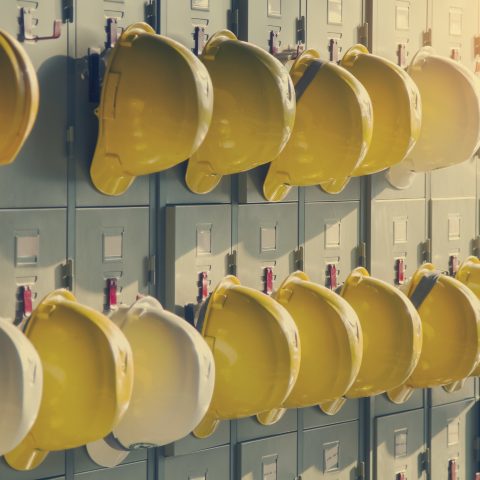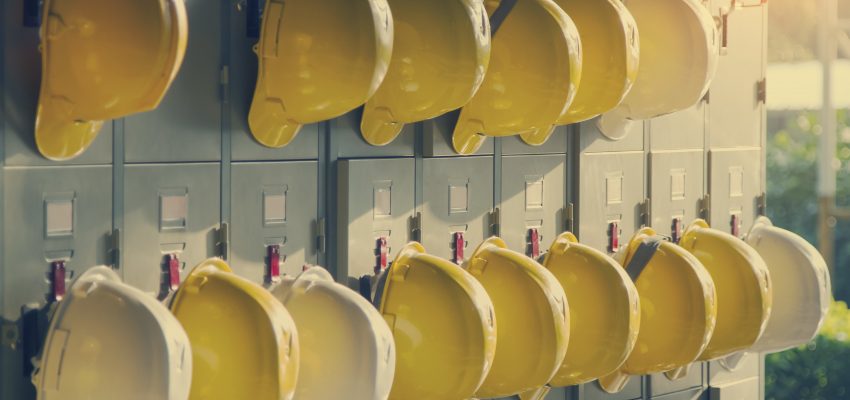The idea of prefabrication in the construction industry is nothing new, though there is often confusion around what the term describes. “Prefabrication” is sometimes used interchangeably with terms like “modular” and “off-site construction.” Fundamentally, prefabrication means taking labor that would usually have to be carried out in the field and moving those operations into a shop or manufacturing environment to save time and money. It’s a concept we believe in because we’ve seen how beneficial adoption of prefabrication can be in the face of modern construction industry challenges.
One benefit of prefabrication is that access to the job site is not necessary to make progress. A couple of examples might include pouring precast walls with rebar off-site and then moving them to the construction site or joining two pieces of building materials in a facility. It could also mean entire guest rooms are built and finished at a prefabrication shop before being shipped to a modular hotel site. Regardless of how it is implemented, prefabricated construction is about gaining efficiency and minimizing costs, and its popularity has only increased in response to industrywide trends.
Enduring Trends Fuel Prefabrication’s Popularity
Skilled Labor Shortage
We can’t talk about construction industry trends without mentioning the elephant in the room: the skilled labor shortage. It’s no secret that skilled tradespeople are in high demand, and many contractors are frustrated that they can’t find good help. When skilled laborers left the construction industry after the market downturn a decade ago, many never returned. In the meantime, younger members of the workforce were reluctant to enter what seemed like a volatile and sometimes unglamorous industry.
As a result, there are two problems in the industry today: not enough skilled workers to get jobs done within tight time frames, and quality control issues when labor is completed by those who lack experience. Luckily, prefabrication can help with both issues.
- By conducting a significant amount of the labor required for a project at a prefabrication shop or manufacturing facility, there’s less need for specific skilled tradespeople on a job site at all times. Those who are on-site can spend their time either on highly technical tasks (if they have the proper level of experience to complete them) or on streamlined, simplified installation tasks.
- By assembling components in a controlled, off-site environment, there is less chance of installation quality issues. Experienced managers or supervisors can oversee assembly in one centralized location instead of hoping everything goes smoothly on every job site out there.
- As an added bonus, prefabrication allows contractors to minimize the need to manage on-site inventory, minimize the amount of scrap produced and managed on-site, and minimize source-related issues related to spot-buying and partial shipments.
Accelerated Timelines
As competition increases for construction jobs, project bids are becoming more aggressive, project timelines are being shortened and profit margins are being squeezed. Winning requires a mix of the right skillsets, easy-to-use materials and process efficiencies that allow contractors to meet tight deadlines. When speed is critical, prefabrication can again offer significant benefits, including:
- More lead time. Contractors can get more done before even arriving on the job site when they begin assembly at prefabrication shops or manufacturing facilities.
- Less downtime. Laborers can work in the prefabrication shop when not out on service calls, filling gaps in their schedules and staying ahead of demand for their skills.
- Scheduling flexibility. When it’s difficult or dangerous for a contracting crew to be on a job site because another group of tradespeople are working, when city ordinances restrict job site activity during certain hours, or when building occupants might be disturbed by noise and dust, prefabrication allows progress to still be made.
We have seen prefabrication compress job schedules by as much as 18%, proving that smart planning can help contractors avoid falling behind.
Safety Concerns
Nearly every business lists “safety” as a top priority, and thanks to increased awareness of job site risks and increased regulation, many are working hard to improve the safety of today’s workers. Often, that means minimizing incidences of risky behavior, whether that means decreasing time spent on ladders and lifts, removing opportunities for lacerations, decreasing on-site use of flames, or other adjustments. Once again, prefabrication can help here. By moving riskier activities to controlled, well-monitored environments staffed by seasoned professionals, prefabrication can have a positive impact on safety.
How to Make the Most of Prefabrication
While it might sound like taking advantage of prefabrication requires a large scope of operations, size is less important than having leadership with the right mindset. The industry is evolving, and those willing to adapt to new realities will be best prepared to thrive. Whereas large companies might be able to move more manufacturing in-house or more easily start prefabrication shops, smaller companies may be even better suited to adopt innovative procedures in a nimble manner. There’s opportunity through adoption of prefabrication for any contracting firm willing to make the necessary process adjustment, but that may look different for different companies.
- Some companies will want to start by seeking out products that save them time on the job site, even if they are still mostly handling assembly in a traditional manner for the time being.
- Others may be ready to embrace true prefabrication, finding ways to preassemble various building materials and components in off-site locations to stay ahead of deadlines.
- Those who are most advanced will set up relationships with manufacturers, sharing drawings and specs, involving outside resources in engineering and system layout, then scheduling delivery of prefabricated units in accordance with their project schedule.
You don’t have to have someone designing, assembling and kitting entire electrical systems for you to benefit from prefabricated solutions. You just need to recognize that industry trends are pointing you toward prefabrication and figure out what degree of adoption makes sense to promote your long-term success. There may be an adjustment period, but the benefits will soon become clear.
Have questions about prefabricated solutions? Learn more about how we partner with contractors to provide the prefabricated solutions they need to reduce costs and operate efficiently.


